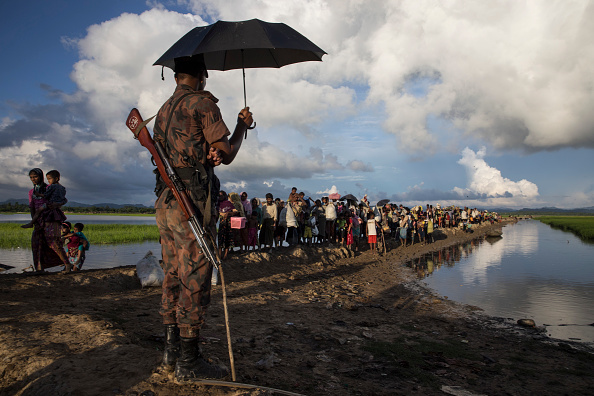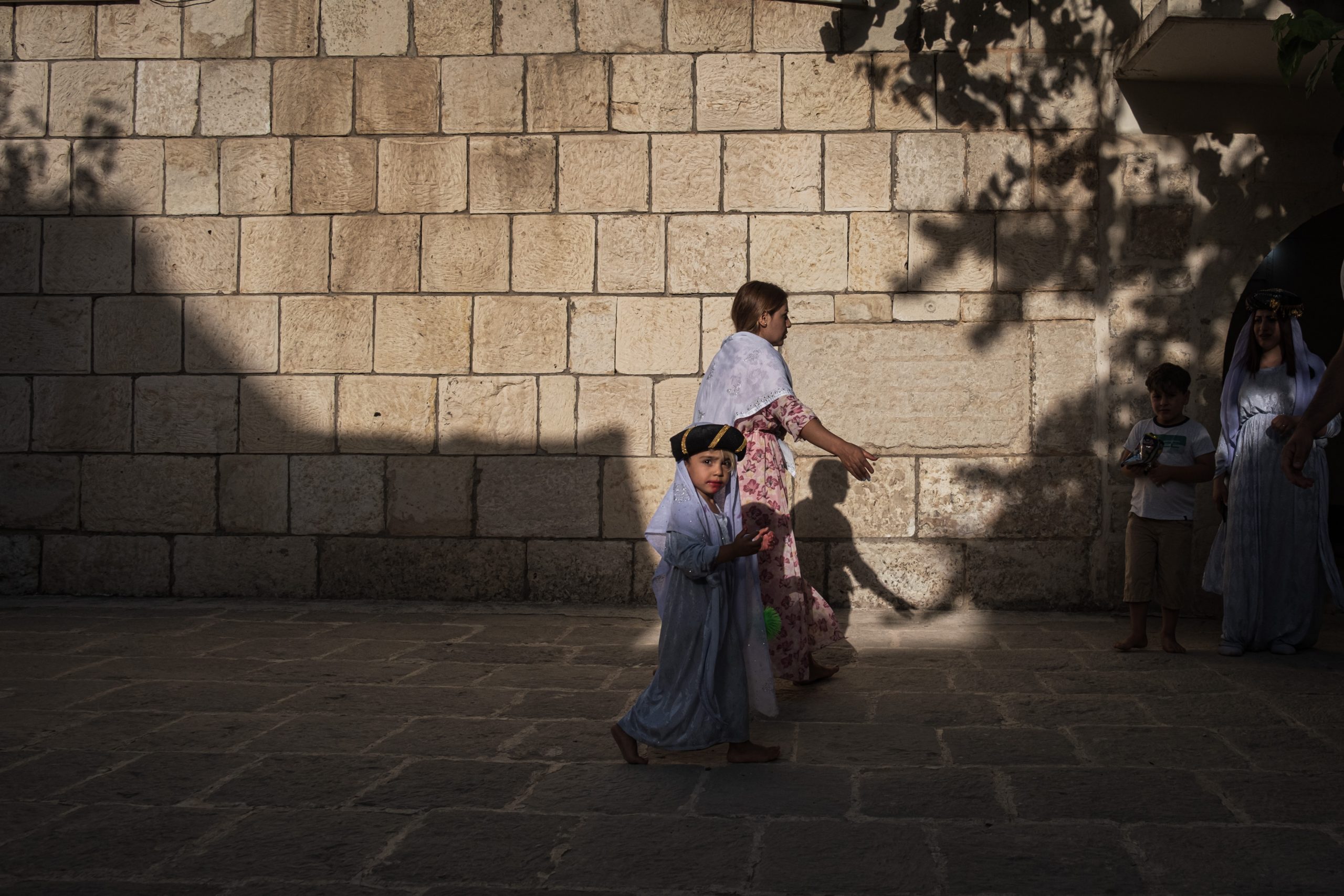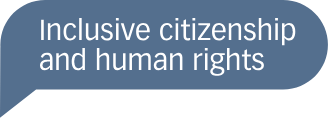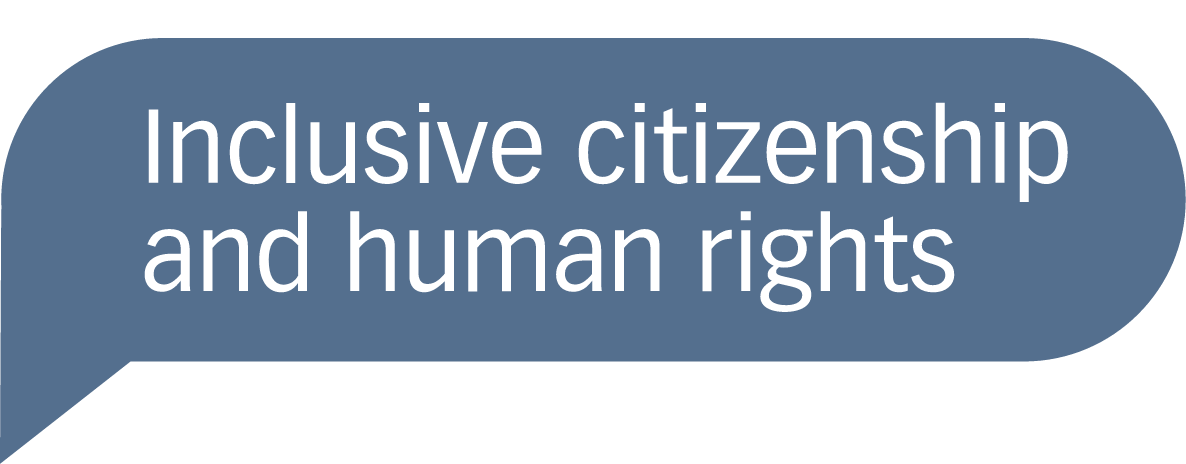
Mass atrocities encompass the crimes of genocide, crimes against humanity, war crimes, and ethnic cleansing. According to the UN, atrocities are considered “the most serious crimes against humankind”, affecting “the core dignity of human beings”.
These crimes share the use of large-scale violence but differ in their legal definitions and how they are addressed. They are collectively referred to as atrocity crimes, and are legally defined by the 1948 Genocide Convention, the 1949 Geneva Conventions, and the Rome Statute of the International Criminal Court.
On this page, we take a closer look at mass atrocities, focusing on large-scale, one-sided attacks on civilians. Here we also present the concept of genocide, its different definitions and related challenges.
Mass atrocity crimes
In international law, the four mass atrocity crimes are genocide, crimes against humanity, war crimes, and ethnic cleansing. Each is different in its nature and in its required response, but it can be hard to distinguish between them when atrocities are ongoing.
Genocide is often seen as the gravest atrocity crime. This atrocity legally consists of “acts committed with intent to destroy, in whole or in part, a national, ethnical, racial or religious group, as such”, but there are challenges to the legal definition. For an in-depth focus on genocide, read more below – What is genocide?
Crimes against humanity partly overlap with genocide, as they are acts “committed as part of a widespread or systematic attack directed against any civilian population”. They do not require the victims to belong to a certain group, or the attacks to be motivated by group identity. Crimes against humanity can be prosecuted by the International Criminal Court (ICC), but the term does not have the same political impact as genocide. These criminal acts include murder, rape, imprisonment, enforced disappearances, enslavement, sexual slavery, torture, apartheid, and deportation.
War crimes are violations of the laws of war, legally established by the Geneva Conventions to regulate and prosecute illegal acts during wartime. Breaches of the Geneva Conventions, violations of international laws of armed conflict, and violence targeting innocents and civilians can all amount to war crimes, according to the Rome Statute of the ICC.
Ethnic cleansing often refers to policies meant to render an area ethnically homogeneous, or to the forced deportation of a group. The term, however, is not legally defined. It is often used to describe attacks on a group where it is uncertain whether the threshold for genocide has been reached, or if actors wish to sound the alarm about massive attacks on civilians but are hesitant to use the more consequential term of genocide. Criminal prosecution will usually fall under the ICC’s provision on deportation or forced transfer of populations, which are crimes against humanity.
How Are Mass Atrocities Connected?
The four mass atrocities are considered to be the most serious of crimes, affecting all of mankind. They are therefore deemed international crimes. While all atrocities are distinct, they are bound together by the international pledge to protect civilians from them, formulated in the Responsibility to Protect (R2P) doctrine.
They also overlap legally. Atrocities can often fall under the category of “persecution”, defined in the Rome Statute of the ICC as the “intentional and severe deprivation of fundamental rights contrary to international law by reason of the identity of the group or collectivity” (art 7, para 2, g). The act of mass killing is another common feature, although it is not required for attacks to be categorized as atrocity crimes – even genocide.
It is important to remember that atrocity crimes can be predicted through careful monitoring and early warning, meaning they can be prevented by acting in a timely manner. When atrocities are ongoing it is often impossible to distinguish between them, which calls for a broad approach to atrocity prevention. While patterns of civilian violence may emerge, whether they amount to war crimes, crimes against humanity or genocide may only be decided in court years later. For further information on atrocity prevention, you can find more resources on the Mass Atrocity Prevention page.
What is genocide?
Few concepts have as much political and symbolic power as the word “genocide”. The term was coined during World War II to embrace the destruction of groups on the basis of who they are and was used to describe the destruction of European Jewry and groups such as the Roma people.
If many people belonging to the same group are intentionally killed, this extensive violence is often called genocide. The word itself reflects this, as it is composed from “génos”, Greek for family or kind, and “caedō”, Latin for kill.
Does it matter to call atrocities genocide and not ethnic cleansing or crimes against humanity? Interview with Professor William A. Schabas
The legal definition of genocide was established by the 1948 Convention on the Prevention and Punishment of the Crime of Genocide (the Genocide Convention) (for more definitions, see Different definitions of Genocide). It is much narrower than how the concept was initially understood by Raphael Lemkin, who advocated for the outlawing of genocide. The legal definition criminalizes “acts committed with intent to destroy, in whole or in part, a national, ethnical, racial or religious group, as such”, such as:
- Killing members of the group;
- Causing serious bodily or mental harm to members of the group;
- Deliberately inflicting on the group conditions of life calculated to bring about its physical destruction in whole or in part;
- Imposing measures intended to prevent births within the group;
- Forcibly transferring children of the group to another group.
Criminalizing these acts independently from armed conflict means that individuals can be held accountable in a court or tribunal for crimes committed against populations even during times of peace. Following the logic of the Nuremberg Principles, established after the trials of the Nazi leadership, this also means that acting on behalf of a state does not grant immunity. These were groundbreaking and radical principles, made possible by the narrow definition and scope of the term genocide.
Individuals have been held responsible for genocide in various international tribunals, including the ICTY and the ICTR. Recognizing genocidal intent in acts against civilians is a crucial step in order to prosecute perpetrators in a court. This special intent means that groups must be targeted for destruction solely because of their group identity, setting a high threshold for atrocities to actually amount to genocide. If intent cannot be proven, mass violence may fall under different categories, such as crimes against humanity, and be punished as such.
According to the Genocide Convention, all states are supposed to prevent genocide and protect people from it. The extent of this legal obligation can be difficult to define. Also, the legal threshold to prove genocidal intent becomes a challenge for prevention. In fact, genocide is usually the result of a gradual process of escalation and radicalization, where intent also develops gradually, and is rarely expressed on beforehand. Preventing a genocide effectively, then, is also affected by its legal definition.
Different definitions of genocide
The concept of genocide and the Genocide Convention have their origins in legal activism, and the driving force in this activism, Raphael Lemkin, saw genocide as a broader concept linked to colonialism and the eradication of cultures. However, the Convention was shaped by existing political realities. In 1948, the newly established United Nations wrote and adopted the Genocide Convention only when its great powers settled on a definition that did not target their own mistreatment of various groups, within their own societies or in warfare. This narrow definition of genocide applied only to some cases of mass killing, rather than all.
Strict requirements, broad solutions
The definition of the term “genocide” is thus purposefully complicated. In addition to the strict legal criteria of the Convention, international courts have set the threshold for a genocide conviction high: a case can only be genocide if there are no other reasonable explanations for attacks on civilians. It is particularly challenging to demonstrate the existence of a special genocidal intent, since different motives such as eradication of a group and military defeat may exist side-by-side.
The Genocide Convention is also limited to four protected groups: national, ethnical, racial, and religious, excluding political, gendered, and sexuality-based groups as potential victims. Acts of genocide also focus on physical destruction, dismissing the eradication of group identity, or “cultural genocide”, as well as forcible transfer and ethnic cleansing.
The Rwandan Genocide: A Brief Overview | Interview with Honoré Gatera
The strict requirement of genocidal intent and limitations of victim groups have created a need for broader definitions. This is especially the case for scholars who want to understand the phenomenon of eradication of groups, and activists who want to prevent such atrocities. Within genocide studies and genocide prevention, multiple non-legal definitions have been proposed throughout the years (via Wikipedia), attempting to correct the weaknesses of the legal definition. Alternative definitions can help understand genocide as a social practice, the stages of gradual dehumanization, exclusion and eradication, and the targeting of various groups.
Defining genocide, according to Ernesto Verdeja, is typically done in one of four ways, depending on their goal and audience. Beyond the legal definition provided by the Convention, each approach focuses on a different aspect:
- Researchers tend to focus on causal explanation, less on proving intent, and tend to include victim groups beyond those in the definition.
- Activists and international political actors use the term to identify mass violence, encouraging intervention and prevention responses.
- The general public focuses on the emotional weight of these acts, deemed immoral, unacceptable, and in need of being stopped.
An ongoing conversation: Why is genocide a contested term?
The term genocide remains deeply contested due to its legal and political implications. It is a powerful political term and accusation, able to generate heated reactions on all sides, and its legal recognition may trigger an obligation to take preventive action. Due to the term’s historical origins in the Holocaust, accusations of genocide imply the immorality of perpetrators and innocence of victims. For victims of mass violence, being recognized as potential victims of genocide sparks hopes of intervention and rescue. Therefore, understandably, genocide is a term often reached for by desperate victim groups.
In international advocacy and politics, however, the legal definition of the Genocide Convention remains the reference point, meaning that its high threshold leads to complicated debates that may not serve the interests of victims of mass violence. On the contrary, legally correct arguments about the high threshold of genocide can be taken by perpetrators of mass violence to downplay their attacks on civilians. As the conversation around the term evolves, understanding its definitions and applications becomes crucial for effective prevention. For more on this, explore our page on “Mass Atrocity Prevention.” [link to subtopic 3.]

A member of the Yazidi community in Lalesh. The Yazidies are one of several groups who have sought recognition of mass violence against them as genocide. Read more about the Yazidies here. (photo by Anadolu / Getty Images)
Additional readings
For more information on the concept of genocide and mass atrocities, here are some reading resources we recommend. These readings cover the basics to understand genocide and mass atrocities, as well as highlight the current debate on the definition of genocide.
Academic articles and books:
Hinton, Alexander Laban. 2012. “Critical Genocide Studies.” Genocide Studies and Prevention: An International Journal 7 (1). https://digitalcommons.usf.edu/gsp/vol7/iss1/3/.
Jones, Adam. 2024. Genocide: A Comprehensive Introduction. 4th ed. London; New York: Routledge, Taylor & Francis Group.
Schabas, William A. 2009. Genocide in International Law: The Crimes of Crimes. 2nd ed. Cambridge, U.K.: Cambridge University Press. https://doi.org/10.1017/CBO9780511575556.
Straus, Scott. 2001. “Contested Meanings and Conflicting Imperatives: A Conceptual Analysis of Genocide.” Journal of Genocide Research 3 (3): 349–75. https://doi.org/10.1080/14623520120097189.
Straus, Scott. 2016. Fundamentals of Genocide and Mass Atrocity Prevention. Washington, D.C: United States Holocaust Memorial Museum. https://www.ushmm.org/m/pdfs/Fundamentals-of-Genocide-and-Mass-Atrocity-Prevention.pdf.
Legal instruments and definitions:
International Criminal Court. 1998. “Rome Statute of the International Criminal Court.” https://www.icc-cpi.int/sites/default/files/2024-05/Rome-Statute-eng.pdf.
United Nations. 1948. “Convention on the Prevention and Punishment of the Crime of Genocide.” United Nations. United Nations. https://www.un.org/en/genocideprevention/documents/atrocity-crimes/Doc.1_Convention%20on%20the%20Prevention%20and%20Punishment%20of%20the%20Crime%20of%20Genocide.pdf.
United Nations. 2022. “Definitions of Genocide and Related Crimes.” United Nations. 2022. https://www.un.org/en/genocide-prevention/definition.
Current debates:
Ongoing wars, particularly the current violence in Gaza and in Ukraine, have put debates about the genocide definition to the forefront of international politics and advocacy. The debate has highlighted the challenges of meeting the strict criteria for genocide in ongoing conflicts, discussed in pieces such as these:
Bartov, Omer. 2023. “What I Believe as a Historian of Genocide.” New York Times, November 11, 2023. https://www.nytimes.com/2023/11/10/opinion/israel-gaza-genocide-war.html.
Bartov, Omer. 2024. “As a Former IDF Soldier and Historian of Genocide, I Was Deeply Disturbed by My Recent Visit to Israel.” The Guardian, August 13, 2024. https://www.theguardian.com/world/article/2024/aug/13/israel-gaza-historian-omer-bartov.
Moses, Dirk. 2023. “More than Genocide.” Boston Review, November 14, 2023. https://www.bostonreview.net/articles/more-than-genocide/.
Narea, Nicole, and Sigal Samuel. 2023. “How to Think through Allegations of Genocide in Gaza.” Vox. November 13, 2023. https://web.archive.org/web/20240709145636/https:/www.vox.com/world-politics/2023/11/13/23954731/genocide-israel-gaza-palestine.
Stensrud, Ellen E. 2024. “Genocide in Gaza?” Mass Atrocity Responses (blog). November 20, 2024. https://www.massatrocityresponses.com/blog/genocideingaza.
Straus, Scott. 2022. “Genocide in Ukraine: What Are the Roots of the Debate?” JusticeInfo.net, May 13, 2022. https://www.justiceinfo.net/en/92081-genocide-in-ukraine-roots-debate.html.
Related Resources
Find digital tools produced in cooperation with partners and researchers from different regions.
Coverphoto: by Andrew Renneisen/Getty Images



